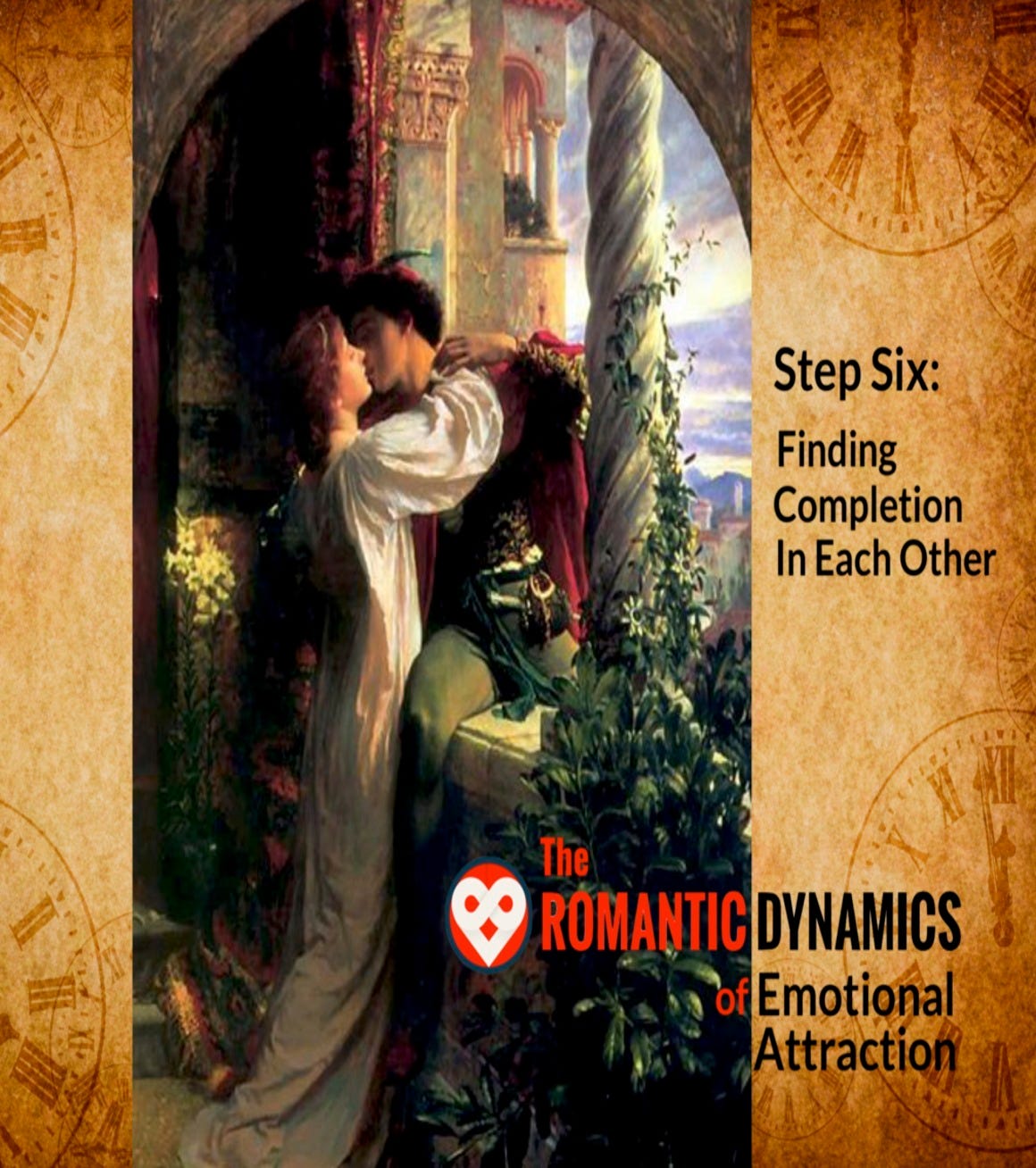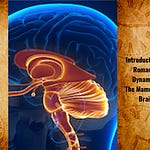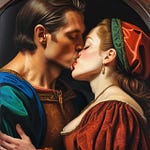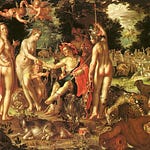We will continue the audio instruction on the final step six the three (4, 5, 6) in the second phase of courtship—Emotional Attraction. And how Romantic Dynamics® works in the completion of phase two. We will then cover each of the remaining three steps of courtship in their own audios.
Thanks for reading Romantipedia™! Subscribe for free to receive new posts and support my work.
In this sixth lesson, and each one thereafter, I will list the notes I’ve used to give speeches to my classes on these steps, so I will use those as we go along.
I wanted you to have them here so that you can see what I’m addressing in the audio.
An Overview of Romantic Dynamics®:
The Nine Steps of Courtship
Step 6 - Finding Completion in Each Other
▪ "Getting Real" With Each Other
▪ A Midsummer Night’s Dream explores the mysterious nature of love and its existence on the border between fantasy and reality. It is Shakespeare’s way of showing how fragile it is for us and confusing for us all. Yet it is my hope to show you that even this most terrible confusion about love cannot hold power over you anymore, armed with this knowledge.
▪ Love in the Time of Cholera explores the tragic nature of love and time, which brings age and their existence on the border between fantasy and reality. It is Garcia Marquez’s way of showing us how fragile we are when faced with the passing of time, and the fickleness of love, the seeming impossibility of “getting it right, the first time.”
▪ You do not need to worry about things like “age” or “getting it right” with the other gender when you understand the nature of love and personality styles. When you get what we learn in this third and final step of emotional attraction, you reach “soulmate” status with a potential mate, and things start happening automatically in the “right way” with the “right timing.”
▪ The Spectrum of Friendship
▪ From Acquaintances to Best Friends
▪ From basic development of character to advanced, mature character
▪ From low intimacy and independence to high intimacy and interdependence
▪ From non-serious and low commitment or duty to highly serious and high commitment
▪ From pleasurable and pleasant to the addition of being efficient and successful
▪ From two singles of high compatibility to two highly compatible people who are working as one
▪ From discovering new things about each other to discovering what's possible in working together.
▪ Personality Vs. Character
▪ Personality is more like "style," while character is more like an "amount of maturity"
▪ Personality is "emotional" and "intellectual", while character is more about the intellectual aspects called "executive function"
▪ Personality has a more emotional "mammalian brain" to it, and character has more "higher brain" to it
▪ Compatibility of personality has more to do with connecting to one's opposite style, while character has more to do with connecting to people of similar maturity levels.
▪ "Opposites attract" pertains to personality, while "Like attracts Like" and "Birds of a feather, flock together" has more to do with character traits.
▪ The more different you are in style of emotion and intellect, the more compatible you are, and the more similar you are in character maturity, the more compatible you are, where high character individuals can tend to get along with anyone or befriend anyone.
▪ The Four Personality Styles
▪ Kings/Queens - Let brained and nurturing in well-being
▪ Lovers - Right-brained and nurturing, in terms of well-being
▪ Warriors - Left-brained and outgoing or confident
▪ Magicians - Right-brained and action-oriented people
▪ Phlegmatic - (dominated by Phlegm) was to him, one in which the person is rational, quiet, slow, and consistent, or even predictable in behavior, like a teacher or administrator, common in wise, rational Kings or Queens of Shakespeare’s time. This would likely be an “Earth-based” temperament if we had to correlate with Hippocrates.
▪ Choleric - (dominated by Bile) was one in which the person is energetic, full of passion and fire, someone who works hard, and does not shy away from conflict, perfect in a soldier to guard the kingdom or a Warrior. If we had to make this a Hippocratic correlation, the person would be a “Fire-based” temperament.
▪ Sanguine - (dominated by Blood) was one in which the person is optimistic, cheerful, and confident, the “master of ceremonies,” with the ability to make magic happen, like a Magician of the stories of Shakespeare’s time. Imagine someone like the magician Merlin to King Arthur. Hippocratically, an “Air-based” temperament.
▪ Melancholic - (literally, Black Bile) is one in which the person is depressed or sad, fearful, yet artistic, like a poet. This is perhaps the temperament most in need of and expressive of love. A poet or Lover saw in Shakespeare’s time if not Shakespeare himself - the “artistic temperament.” In terms of Hippocrates’ four elements, a “Water-based” temperament.
▪ The Spectrum of Personality
▪ Intellectual - Left-brain Vs. Right-brain
▪ Emotional - mother vs. father or nurturing vs. action-taking, maternal vs. paternal, or well-being vs. confidence
▪ Crossed spectra - gives you coordinates, and places or zones where particular behavior occurs, including the traits of the main personalities
▪ King (phlegmatic) - is left-brained and maternal
▪ Warrior (choleric) - is left-brained and paternal
▪ Magician (sanguine) - is right-brained and paternal
▪ Lover (melancholic) - is right-brained and maternal
▪ Obsessive is far left with little emotion
▪ Psychotic or disorganized is far right with little emotion
▪ Completely depressive is top with little intellect
▪ Completely aggressive is bottom with little intellect
▪ Temperament and growing a personality through life
▪ Temperament is what we start with
▪ Personality is what we grow
▪ Personality and character may come into alignment, where we have access to more of the four personalities
▪ Matchmaking and compatibility of personality
▪ Opposites attract - Kings/Queens with Magicians and Lovers with Warriors
▪ Sometimes you get a better intellectual match - Kings with Lovers and Warriors with Magicians
▪ Sometimes you get a better emotional match, which is more durable for romance - Kings with Warriors and Lovers with Magicians
▪ But they all have their challenges when a partial match
▪ When it is a King with a King, Lover with a Lover, Warrior with a Warrior, or Magician with a Magician, it is bad, competitive, nothing to offer each other
▪ Romeo and Juliet and the Macbeths
▪ When you are too similar
▪ There is competitiveness
▪ There is using each other
▪ Getting bored - nothing to offer each other
▪ Codependence - all early relationships and first BFs and GFs start this way due to common interests attracting to an environment
▪ Someone ends up winning and someone losing, which kills the sexual attraction too
▪ Challenges of Kings and Queens - arguing about being right
▪ Challenges of Lovers - mutual fear and loathing of each other
▪ Challenges of Warriors - fighting, destruction
▪ Challenges of Magicians - substance abuse and not paying the bills
▪ pathological narcissism and boundaries in personality
▪ True Self, False Self, Ideal Self and
▪ The three types of boundary configuration in the three phases
▪ Sexual attraction boundaries
▪ Emotional attraction to friend boundaries
▪ Intellectual attraction commitment partner boundaries
▪ From Aristotle to the Altar
▪ The definition of friendship
▪ The definition of soulmates or best friends
▪ Transitioning to commitment and marriage
▪ How to be imperfect and make up the difference
▪ How intellectual attraction will be different from an emotional attraction
▪ How it will need character maturity on top of personality
Thanks for reading Romantipedia™! Subscribe for free to receive new posts and support my work.













